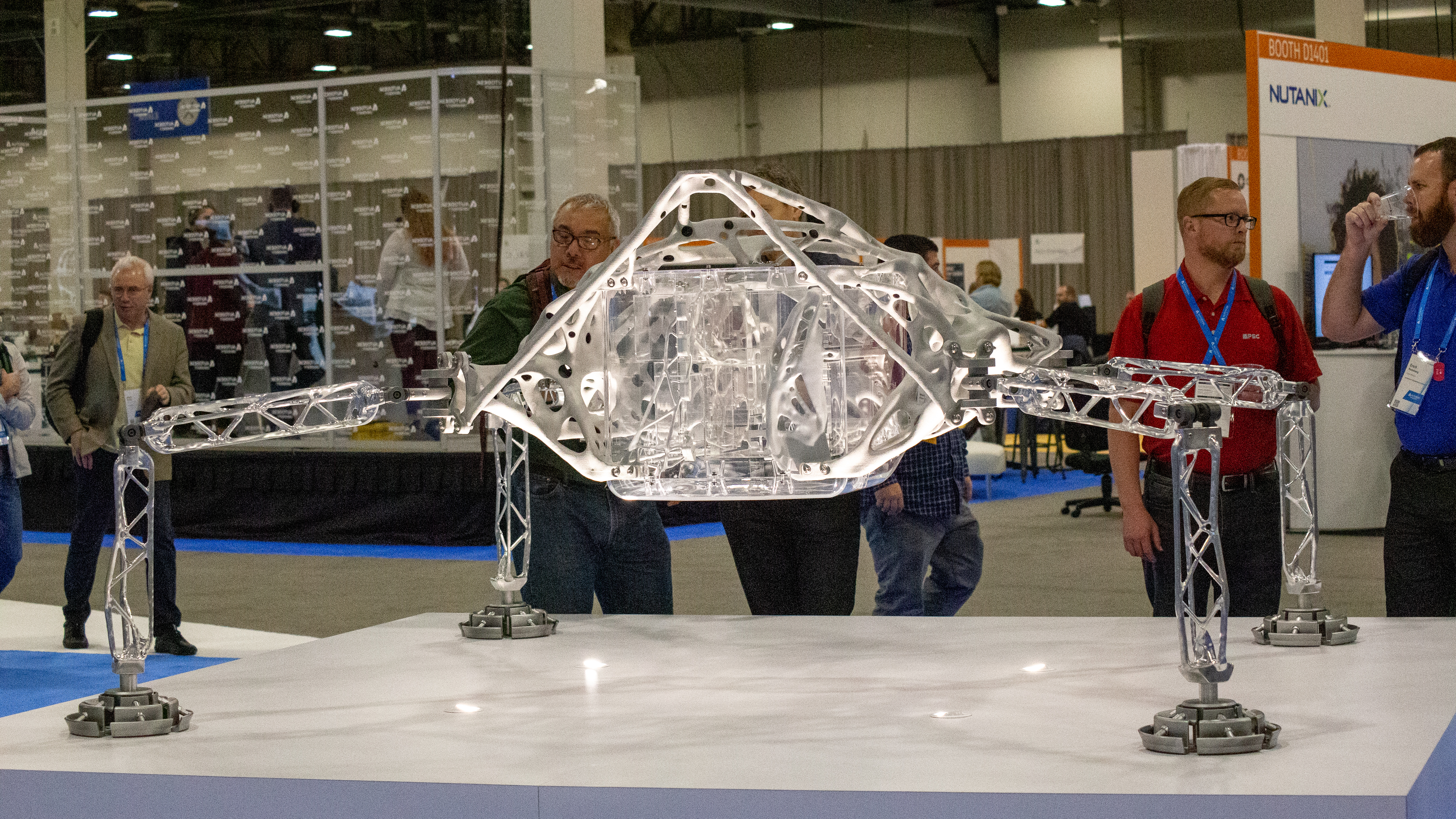
After successfully avoiding the blackjack tables and slot machines Monday night, we awoke refreshed and ready to tackle Day Two of Autodesk University. It was a big day for a number of reasons. For one thing, Tuesday featured a keynote directly from Autodesk’s CEO Andrew Anagnost and CTO Scott Borduin, where they spoke about the direction of the company, its objectives, and goals. Yesterday was also the official opening of the enormous expo, where companies demonstrated their products and the amazing work they’ve done using Autodesk’s array of software. Here are BuiltWorlds’ main takeaways from Day 2:
1. Autodesk is fully embracing automation
Automation is a disruptive word in the built world. People equate it to monumental change and a potential loss of jobs. Yet, Autodesk hammered home the theme of automation in its general keynote. Anagnost kicked off the keynote saying the company is focused on “the opportunity of better...making things better and doing things better.” This is achievable through automation, which increases efficiency and frees up people’s time.
“Automation doesn’t take things away, but it changes the work,” Anagnost said.

Change is good, and Anagnost laid out examples of how automation helped improve two completely different professions: bank tellers and farmers. The advent of ATMs allowed tellers to focus on other parts of their jobs, and automation in farming lets farmers cultivate more land and grow more products with more efficiency.
“Automating our repetitive tasks doesn't make the tasks we do redundant, it makes them more important,” Anagnost said. “Moving repetitive tasks means we have less friction and more time to focus on what has value.”
Which leads us into our next takeaway…
2. Generative design is already being used to enhance the effectiveness of the design process
At our Buildings 2.0 Conference earlier this year, we heard from PARAFIN Co-Founder Adam Hengels about how generative design can be used to find the best possible design solution quickly. Using iterations like building blocks, computers can quickly find the most effective design of everything from a building’s layout to the body of a car.
During the AU general Keynote, a multi-year collaboration between Autodesk and the Jet Propulsion Labs Laboratory (JPL) was announced. The partnership will see JPL using Autodesk’s generative design technology to design and manufacture crafts for space exploration.
Dr. Erin Bradner, Autodesk’s Director of Robotics talked about how one of JPL’s biggest problems is one shared by many professionals working in the AEC and manufacturing space.
“It’s the challenge of how they [JPL] can better explore all possible design solutions,” she said. “For most companies, the answer is a random walk through a field of solutions, one design meeting at a time.”
Instead, JPL has utilized Autodesk’s generative design solutions, yielding amazing results. A concept of an interplanetary landing craft was unveiled during the keynote. Like most tools they will get launched into space, the craft needs to be as light as possible, but also durable. This technology can be applied to any number of construction and manufacturing applications, many of which were on display on the AU Expo floor.
3. These changes and technologies are going to make the AEC industry almost unrecognizable in 10 years
Following the keynote, Anagnost and Borduin sat down with members of the media, who peppered them with questions about points touched on during the keynote and Autodesk’s future and current focuses. Towards the end of the session, Anagnost expressed his belief that all the cutting edge technologies are really going to morph the built world in a big way.
“I don’t think you’re going to recognize this industry in 10 years,” he said.
Technologies like machine learning, automation, and generative design are acting as accelerators, changing the way things are done and the type of work people do.
“We’ve already changed dramatically in the past five years,” he said.
Anagnost used the advent of the smartphone as an example to back up his point. About 10 years ago, people were still using Blackberries. Now iPhones and Androids are the new norm.
“Smartphones have brought a level of technical sophistication to a broad audience and nobody noticed,” he said.
Anagnost believes the same is going to happen in the AEC industry. New technologies are going to morph the space and push the industry forward. It’s an exciting notion and seeing some of these technological solutions at work really only prove his belief.
Stay tuned for more from our week at Autodesk University.

Discussion
Be the first to leave a comment.
You must be a member of the BuiltWorlds community to join the discussion.